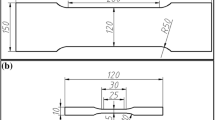The electron backscatter diffraction, X-ray diffraction analysis, electromotive force instantaneous measurement, microhardness and coercive force measurement techniques are used to explore the development of the microstructure, crystallographic texture and physico-mechanical properties of silicon iron (Fe-3% Si) alloy under quasi-hydrostatic pressure in a Bridgman anvil. It is found that the alloy deformation is accompanied by its significant hardening. In-plane torsion test shows that the average grain size rapidly decreases down to 185 nm after a quater turn of the movable anvil. With the number of turns increased up to six the grain size gradually decreases down to 150 nm. At the same time, the average size of subgrains is less dependent on the deformation degree. The crystallographic texture evolution involves the formation of the strong {001} <110> texture component after comparatively small megaplastic deformation followed by the simple shear texture formation. Such a behavior can be correctly described in terms of non-equilibrium thermodynamics.
Similar content being viewed by others
References
U. Messerschmidt, Dislocation Dynamics During Plastic Deformation. Springer, Heidelberg (2010), 503 p.
J. P. Liu, E. Fullerton, O. Gutfleisch, and D. J. Sellmyer, Nanoscale Magnetic Materials and Applications. Springer, Heidelberg (2010), 450 p.
R. Z. Valiev, R. K. Islamgaliev, and I. V. Aleksandrov, Progr. Mater. Sci., 45, 103–189 (2000).
A. P. Zhilyaev and T. G. Langdon, Progr. Mater. Sci., 53, 893–979 (2008).
A. Belyakov and R. Kaibyshev, Nanostruct. Mater., 6, 893–896 (1995).
Glezer A. M., Kozlov E. V., et al., Plastic Deformation of Nanostructured Materials, Taylor & Francis Group, Boca Raton (2017), 320 p.
F. J. Humphreys, J. Microsc., 195, 170–185 (1999).
Rigaku PDXL 2, Rigaku J., 28, No. 1, 29–30 (2012).
A. M. Glezer, R. N. Rostovtsev, A. A. Tomchuk, and I. V. Shchetinin, Bulletin of the Russian Academy of Sciences: Physics, 80, No. 80, 1027–1032 (2016).
L. A. I. Kestens and H. Pirgazi, J. Mater. Sci. Technol., 32, 1303–1315 (2016).
T. Sakai, A. Belyakov, R. Kaibyshev, et al., Progr. Mater. Sci., 60, 130–207 (2014).
J. K. Mackenzie, Biometrika, 45, 229–240 (1958).
A. M. Glezer and A. A. Tomchuk, Rev. Adv. Mater. Sci., 45, 9–15 (2016).
A. M. Glezer and R. V. Sundeev, Mater. Lett., 139, 455–457 (2015).
L. S. Metlov, Phys. Rev. Lett., 106, 165506-4 (2011).
S. Li, I. J. Beyerlein, and M. A.M. Bourke, Mater. Sci. Eng. A, A394, 66–77 (2005).
Author information
Authors and Affiliations
Corresponding author
Additional information
Translated from Izvestiya Vysshikh Uchebnykh Zavedenii, Fizika, No. 8, pp. 196–204, August, 2019.
Rights and permissions
About this article
Cite this article
Glezer, A.M., Belyakov, A.N., Rostovtsev, G.R. et al. Microstructure and Crystallographic Texture of Silicon Iron Modified by Torsion Under Quasihydrostatic Pressure. Russ Phys J 62, 1518–1528 (2019). https://doi.org/10.1007/s11182-019-01871-0
Received:
Published:
Issue Date:
DOI: https://doi.org/10.1007/s11182-019-01871-0




